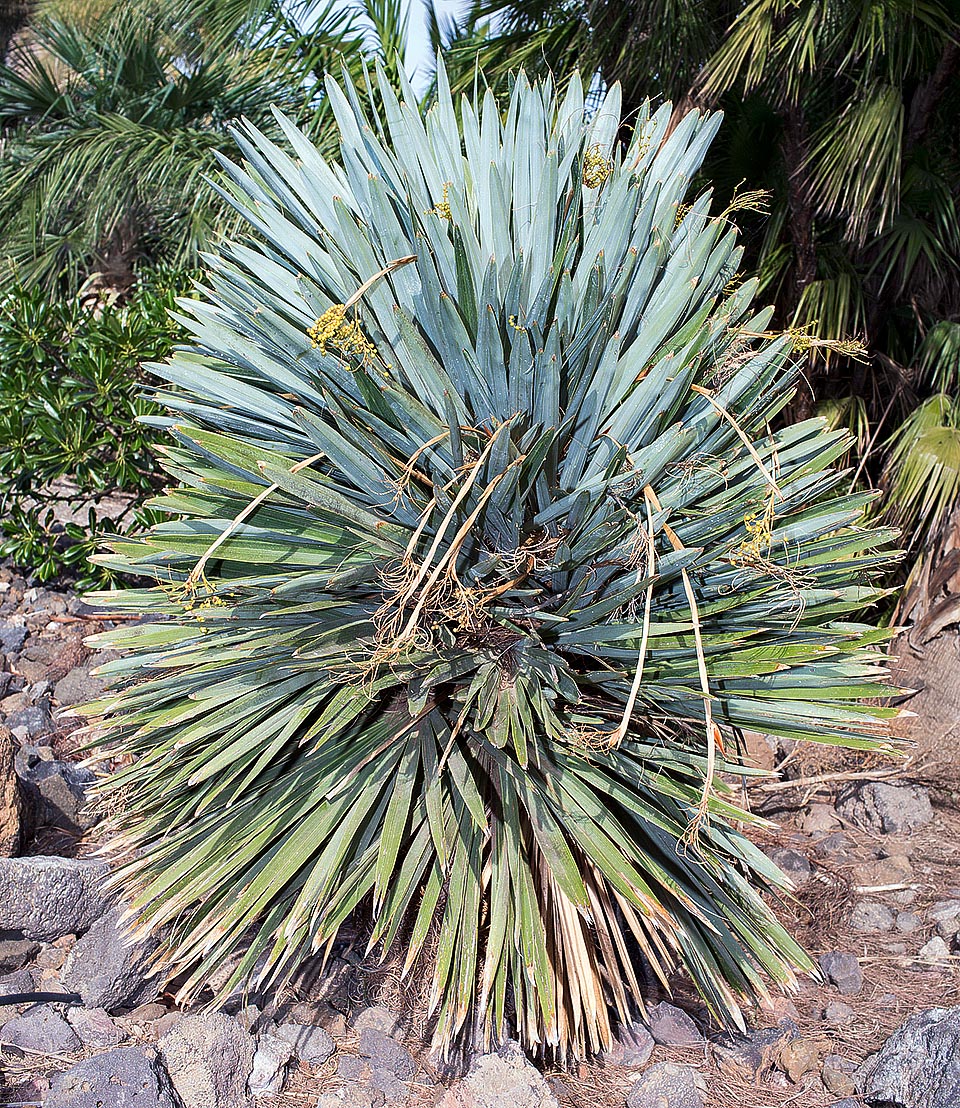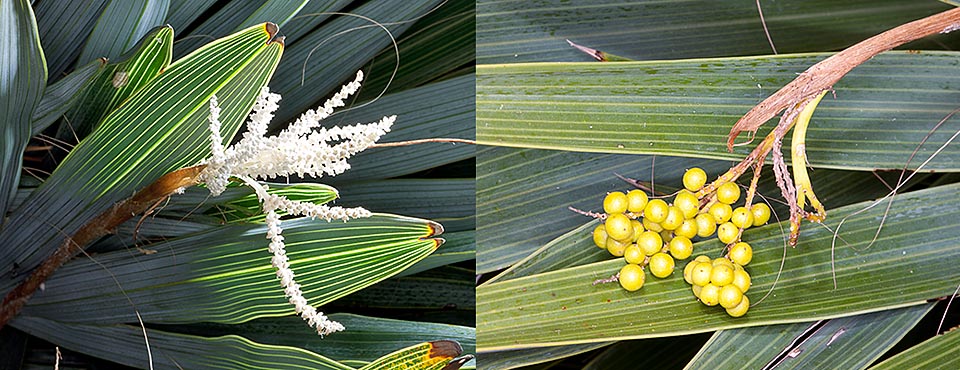Family : Arecaceae

Text © Pietro Puccio

English translation by Mario Beltramini
The species is native to Cuba where it is present with few specimens on rocky hill slopes in the province of Villa Clara.
The name of the genus comes from the Greek prefix “hemi-” = half and from the name of the genus Thrinax; the species is honoured to the Swedish botanist Erik Leonard Ekman (1883-1931).
Common names: Jamagua palm (English); palmita de Jamagua (Spanish - Cuba).
The Hemithrinax ekmaniana Burret (1929) is an unarmed species with solitary stem, erect, of about 5 cm of diameter, up to about 4 m tall, covered, above, by the persistent dead leaves for long time.
The leaves, on an extremely short petiole, not more than 10 cm of length, and with few fibres of the foliar bases of pale brown colour, are palmate, almost circular, subdivided in about 30 coriaceous segments, rigid, waxy, with just bifid pointed apex, long in the central part up to about 45 cm and united at the base for about 1/3 of their length, intense green above, blue grey below, and form a particularly compact spherical top.

Hemithrinax ekmaniana is native to Cuba where it is present with few specimens on rocky hill slopes in the province of Villa Clara © Giuseppe Mazza
Species rare in the wild, presently (2013) reduced to about a hundred of adult specimens which grow in a restricted and isolated area in the central part of the island, close to the city of Sagua La Grande, on typical rocky formations with steep slopes, calcareous, called “mogotes de Jamagua”, presenting a high concentration of flora and fauna and numerous endemism and for such reason declared protected area by the Cuban authorities.
Remained unknown for many decades, after having been discovered and described, due to the inaccessibility of the places where it lives, it has been “rediscovered” in 1976, but still today few young specimens are present outside the origin area in some botanic garden or at some collectors.

Inflorescence with backlit leaves and fruits. It's a very rare species with only a hundred plants in the wild © Giuseppe Mazza
The species is inserted in the red list of the IUCN (International Union for the Conservation of Nature and Natural Resources) as “Critically Endangered” (at extremely high risk of extinction in the wild in the forthcoming future).
Synonyms: Thrinax ekmaniana (Burret) Borhidi & O.Muñiz (1985).
→ For general notions about ARECACEAE please click here.
